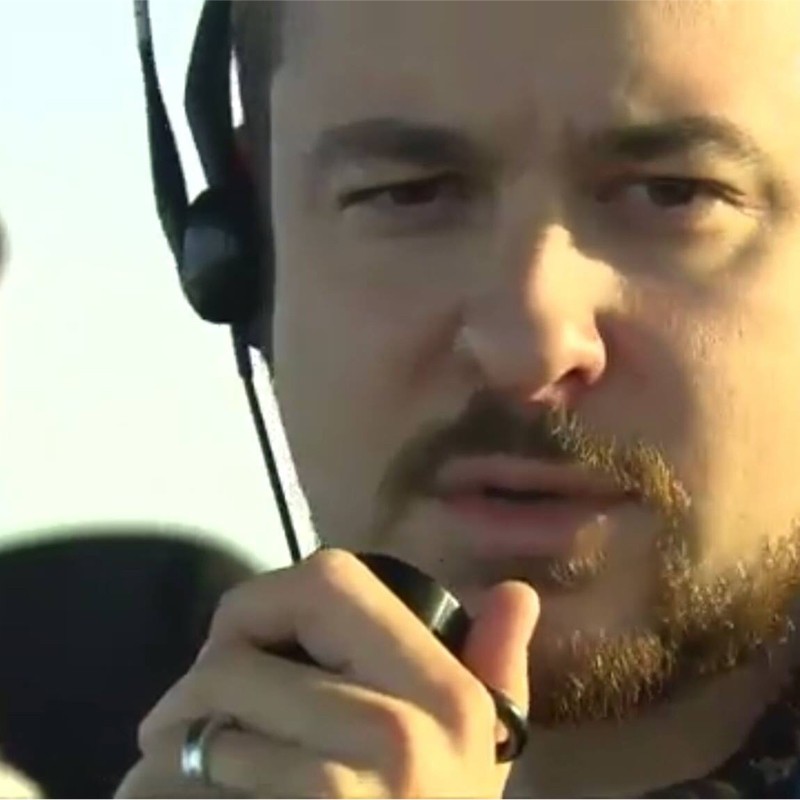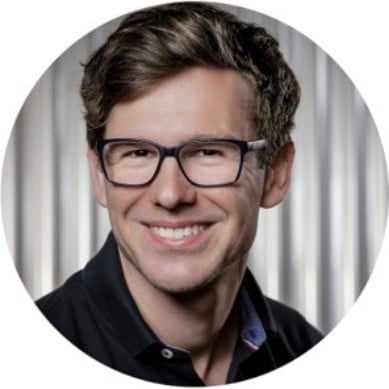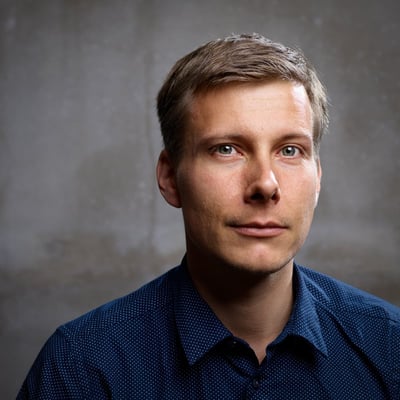Welcome to one more episode of Radar Contact that will be dedicated to training and more specifically at traffic controllers training. And my guest for that is someone we had on an interview before starting the podcast actually. And it's Jérémie Bayle is head of the StarSim Project at DSNA. Jérémie, welcome back to Radar Contact.
Hello Vincent. Thank you for inviting me and questioning me today.
Before we go into simulators and projects, can you just give our audience a short overview of your career path so far? What's who you are, how did you come here and so on.
So as you said, I'm Jérémie Bayle, today I'm program manager for training tools for the sna, the French ANSP. I used to be and I'm still an air traffic controller in Charles de Gaulle airport of our approach. And I am in charge of simulation for CDG for six years now.
And beginning last year from one year and a half I started to manage also a project to install simulators all of our friends unter the name of StarSim project.
Thank you. So we had you on a video interview in mid of 2020 in the highest peak of the Covid crisis because you started to do not only training but also validation of air traffic control students and active controllers who got revalidated not only on the real working position but also in the simulator. And I asked you by the time if it's something that was just for covid or if it's something that would go for long. So how do you stand with that now?
So when we started this, we were really happy with the process itself. It saved a lot of time for our trainees. It was not supposed to be temporary but we had to stop. Not because we had problem with this, but as the traffic came back and so now people think that regular examination session with real traffic is better than only simulation.
So I have to cope with this. We still can do it if we don't hope this, but if a crisis come back now we know how to validate and do it with good feedback but people still prefer the real traffic.
Okay, well that's the situation. Thank you for that. Now you are moving on within DSNA with a new project called StarSim in which you deploy simulators at regional airports or let's say outside of ENAC, which is the school normally for training and you have much more local resources for training. Can you tell us a bit more about that.
Exactly. So the plan here, it was triggered by the Covid crisis. We had problems with training more and more people in less and less time. So the direction of operation for DSNA decided to increase the tools for simulation. So they asked me to find solutions and so the solution was to deploy simulators more and more in the different parts of France instead of centralizing in the ENAC.
The problem is not, the ENAC was doing a bad job, they do a great job till today but they don't have enough space for everyone if we have to train everyone together at the same time. So we decided to increase the number of simulators and give the opportunity to people to train close to their real airport instead of having to travel to the ENAC for training. So the idea here is we will install tower and approach simulators in the different parts of France, one by what we call SNA which are the different district of France, let's say that. And for the moment we start with one in each corner. So we started with the northwest in Nantes then we kept going with Basel airport for Basel and Strasbourg and then we will go to Nice, Bordeaux, Toulouse and if everyone is happy with it we will keep going with, last but not least, last to join the project was Orly airport and they will have their own simulator also this year. Now we are January 23.
Indeed. A few things you said here are quite interesting. First it'll be local training. So each airport has also secondary airport associated to them. For example like Nice has Cannes, Basel has Strasbourg, and so on, which means you deploy simulator at one of these airports that can train controllers from the local airport as well. Is that correct?
Almost correct. I will never say that they are alternate or secondary airports, but let's say partner airports. We will install one physical simulator, which is something we need money to build. So we cannot build a simulator, a physical simulator in every center, but we'll choose one place, at least one place for each SNA to install one big simulator and this simulator will be allowed to train all the airfields of the area.
So it means when we install something in Nantes we have Nanted and Quimper airport at the same time. For the moment for Basel we have Basel and Strasbourg as said, I said this, Nice and Cannes as you mentioned and then Bordeaux, Pau and Lourdes and will be together and then we will deal with the partners in the future we can also add any platform we want. So for the moment we implement the first one and then in the future we plan to develop other platforms also according to the need of DSNA, the airport themselves and the training department locally.
You are setting up these new simulators in premises that are sometimes let's say quite full, already a bit packed. I imagine you are not building new buildings for simulators. So how do you cope with the lack of space on site?
That is exactly the deal my boss went with.
He said if you have to build a new building, it's too expensive, we cannot offer it. So do it with what we have and especially what we have not, we don't have space. So we will find the more we can and then you will deal with it basically in Nantes, we installed a simulator in a former meeting room five by five meters. That's really small, but we succeeded in installing 300 degrees simulator with three pseudo pilots and all in the same room. So let's say we have a generic simulator product from UFA and then we adapted to the configuration of the sites. So big room, big simulator, small room, small simulator. But it's not only this, we also check with the procedures, the VFR procedures, IFR procedures, the runway configuration to find the best tool for the appropriate place. So if you don't need a 360, you don't have a 360 if you need it and you don't have space, I will always prefer not to buy anything instead of buying and building something you will not use or not enjoy.
Very true. What about the timing of the project? I heard it's a bit what to say that constrained on us to us to be quick or what is your plan here?
Yeah, the second part of the deal that my boss gave me, he said you we must do it quick. Because when we started we were in the middle of the crisis of Covid and we are still deep inside the crisis, but even if it's getting better now we try to go quickly and so the deal is to install as many simulators as we can with a good quality and with a reduced time timeline. The initial deal is to make the five initial simulators in five years. So we started one year ago and we installed already two. The third is half done. Let's say we train people, we installed a pre install for the simulator of Nice and then this year we plan to install if the money is coming we will install Nice, Bordeaux and Orly this year and then if money comes back or if the needs are increasing, then we will try to make the best with what we have.
Sounds like a lot of work to be done in short time. And I can also imagine you rely somehow on the local teams was operational and technical. Do you get good support from them? I think so...
Yeah, exactly. You're right. The third part of my deal is my team is really, really reduced. So it means I started basically alone after a few months I had the chance to the opportunity to get a second guy for my team, but that's all the StarrSim project is only two persons and then we rely on local teams. Local teams were always motivated and over over motivated and they are really, really powerful on site. They know what they need. They are most of the time controllers, part of technical department. They know their place, they know the room, they know the runway configuration and else. So we work a lot with them.
What we try to do is to involve them in the decision process so they will define exactly what they want and then we try to find the best way to implement it and build it.
That's something we see every now and then. I've always been quite convinced of that. You just said you involve the users very early in the process in the design and you have operational and technical people working together. It's not like operations maker design finish it and goes to technical and say hey, that's what we want or technical makes a design and go to operation and says this is what you will get. So I think that's working in common between technical and operation is one of the key of the success here.
Yeah, one of the key of the success. But the second thing to take into account is the availability of these guys because human resources in DGAC are not really, let's say we are not a lot everywhere, so sometimes we end in an airport when no one is available or not a lot of people so we have to deal with it depending on the site, sometimes this kind of person controllers are involved or less involved or more involved in the same for technical department because we come with a new system, we want to install it but they already have jobs and sometimes they have more jobs than time to do it.
So we try to make the simulator in order not to add too much work to them so they can adapt to the new system and make the transition without being let's say overrun.
Okay. Now looking at ATC training more generally speaking especially in the future because new technologies allow for a lot of interesting things. We could think of things like for example, living the pseudo pilots beign on a different location. We can think of remote training or training at your own pace and I guess technologically speaking you would've the option to do all of those. What is your personal view on the future of ATC training? Generally speaking and at DSNA?
My personal view on this is we designed the contract we have with UFA to be able to go to these technologies in the future. So it's not something we take with the generic product I mentioned, but it's something we can have as an option because I believe that we can use voice recognition, automatic automatic, pseudo pilot, automatic controller for empty seats on controller sites.
For me we can go with it. The problem is, and anyway, it's a problem that we have to deal with it, it's the computer and cyber security. So connecting our system to the outer world is something my organization is not ready to implement yet. So we will have to fight a lot not to fight against them but fight with them and try to find a way to respect the DGAC rules to connect the simulator to the outer world and maybe have some remote or some instructors and technically it's possible then we can maybe take advantage of it.
I'd just like to intervene here. Fully agree with cybersecurity aspects for operational systems, but here with all due respect, we are speaking about simulation and training. Are not the rules or could not the rules be relaxed a bit in that domain or do you have one set of rule for all your systems?
From my point of view, yes, but I have to prove it to my cyber security department, prove that the simulator is not critical and that even if we are hijacked, nothing bad can happen for me. All the, they are a bit afraid of the procedures, the exercise and all the computers. They don't want any bad guy from the inside to go inside our network and try to attack the operational system from the simulator. So I have to explain everything to prove everything, fill a lot of forms, a lot of documents. So first moment, we progress step by step. I installed the simulator on site. We do everything locally. We have a separate network, everything is separated and that's the point of the cyber study we carried out before the thing we said, okay, everything is separate, we have a separate network, we don't connect to your network by any connection.
So we reached an agreement with the cyber department and we said this, this is okay, if you want the day you want to connect, we discuss again. So when I have time and energy, I will try to prove that it's possible. Technically it's possible and with the contract we have, it's possible also. So we will probably experiment this in the future.
And from that point on, students can probably for some basic training work at their own pace when they want, how they want from home, from their own device and so on.
For me that's the future and it already works in other countries, so I don't see why for us it cannot work. So we just have to find the way to make it work and everyone is happy with it. For the students from home, from the pseudo pilots, we have a hell of a time when looking for pseudo pilots because we cannot find them here in Paris, we are lucky enough to have some of them, but I say some of them, and I understand every word of the sentence, some of them but when we are definitely in some remote places or small cities or small places, they have really big difficulties to find pseudo pilot that are skilled enough for the simulator and that want to stay and help for controller. So that can be a nice solution to have a pool of central pseudo pilots. And then one day in the morning they train Nantes in the evening they train Nice and the day after Basel, without any move.
Yeah, naive question. Cannot another trainee or another controller become the pseudo pilot if you have nobody else or not available either?
Technically they can, and we experimented this in CDG, some controllers can help being a pseudo pilot it's easier for them to become a pseudo pilot because they already know the environment, the exact environment for the coordination.
They can also be really helpful because they are really realistic. We don't have to write anything in the log book. They have the answers, the coordination, they can make some appropriate situation, the right plane at the wrong place in the right moment to make some complication for the student. But it it's complex also to, okay, so the controller who comes to be a pseudo pilot, is it working on shift? Is it working in office? Is it paid extra, is paid is it is regular shift? So all these questions including social questions, money questions are on the table at the moment, technically it's possible and in my opinion, yeah, it can help a lot.
There is one more question about the of training I'd like to ask you specifically. We see more and more private training organization being set up not being part of ANSPs. And I mean historically speaking, air traffic controllers training was one of the task of an ANSP and now we see more and more private organizations. How do you stand with that?
For me, for me and for my organization, it's not the strategy today we will keep the training inside the DGAC. So made by real controllers because for me in France at least, I don't know about the other countries for this, but every center is different. Every center has a set of rules. So if we take some outside organization to do this, we will have to train them then to update them. Here in CDG, we have controllers in the training department, they are up to date because they are still controllers. So they know all the updates. They already have them. They already trained ready from one day to the other to be in the simulator or in real life more easy to manage probably.
Okay, really clear. Thank you for that. And now to wrap up that's something we have on the podcast we did not had before on the interview and that's something we ask all of our guests. So no way you can escape that. How do you see ATM training in five years from now, but also in 50 years from now?
In five years from now, I see at least five simulators of STARSim in France. So to do powerful, accurate, and efficient training for our ATCOs. In 50 years I think will be without me, but for me a lot maybe my wish is to increase the place of simulation in the real training. So we have to change from my point of view, we have to change the balance between on job training and simulator training. So yeah, for me, more simulation, less real position and more technology, not because it's bright, shiny and interesting, but because we can help a lot the students by making a tailormade training session. I mean if we can implement some artificial intelligence or some kind of this kind of technology, it can detect the difficulties a trainee has and provide him with some adapted exercise, some kind of adaptive learning we already have with computer assisted training today.
Maybe we can implement it also for a traffic control and simulation.
Okay. I have to add one more question because what other discussions with different people on the podcast before on what you said with adaptive learning, so that means every student becomes exercises that are adaptive for them specifically, do you see a way to improve the rates of success in training with with that?
I have to say in France we are not ashamed by the rate of success we have when we compare to other countries. So we are already at a high rate of success. The thing we can improve and yeah, we are regular, we are asked to improve. It is the duration of the training. So first moment in big center we have between three and three year and a half for training a student. So maybe this kind of technology and the implementation of adaptive learning can reduce this time of training and that's probably one challenge for the years to come.
Jérémie, thank you for being guest today. It was a pleasure to have you as always.
Thank you. Bye.




